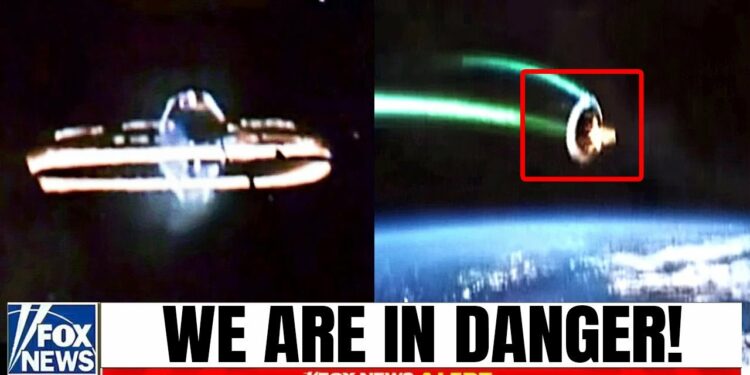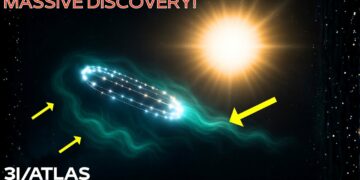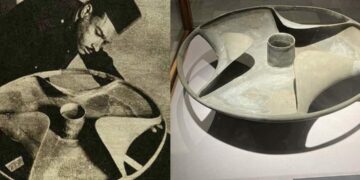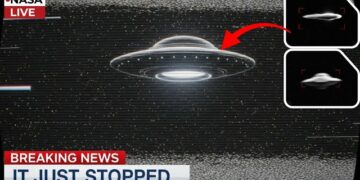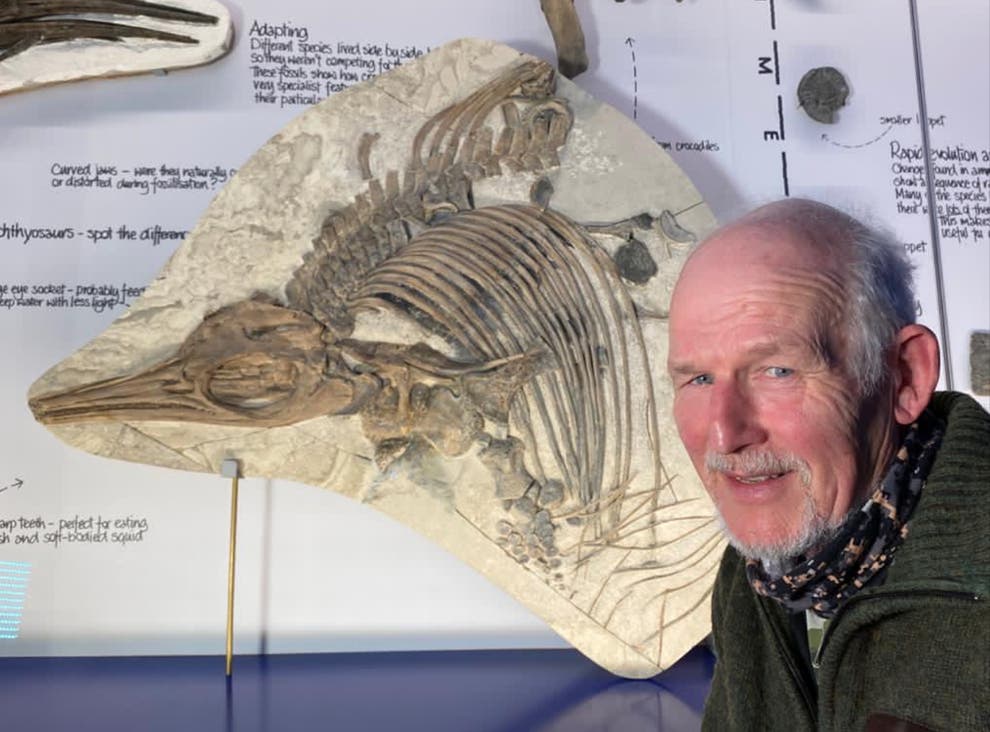NASA reports that Voyager 1, the farthest human-made object in the universe, is once again transmitting usable data to Earth. Launched in 1977, this ancient spacecraft, now 14 billion miles away, has defied expectations by performing an impossible act: it changed direction on its own. Even more unsettling, just before this maneuver, Voyager began sending strange signals with patterns that have scientists puzzled. NASA remains tight-lipped, but insiders are alarmed. Is Voyager trying to communicate something? Has it encountered something in the cosmic void that could reshape our understanding of space?
The Unexpected Signal
In the early hours of a Tuesday in 2023, Dr. Margaret Chen, a 73-year-old engineer who joined the Voyager mission in 1972, was stunned by her monitor. Voyager 1, over 14.5 billion miles from Earth, was transmitting signals it was never programmed to send. Amid routine telemetry, a faint, rhythmic, low-frequency hum with mathematical precision emerged, persisting across multiple transmissions, ruling out random interference. Days before, Voyager had inexplicably adjusted its trajectory without NASA’s command. In the Jet Propulsion Laboratory (JPL), colleagues gathered around Chen’s workstation, the air heavy with coffee and electronics. The signal pulsed with eerie regularity on modern screens, a stark contrast to the room-sized computers of the 1970s. Launched when Jimmy Carter was president and Star Wars premiered, Voyager’s signals now take over 21 hours to reach Earth. What had it encountered? The mission, initially a planetary exploration, had become a mystery at the edge of interstellar space, challenging our cosmic understanding.
As dawn broke over JPL in Pasadena, experts convened in a secure room, grappling with profound questions. Was this a glitch in aging systems, or had Voyager detected something revolutionary? The answers could redefine interstellar space and humanity’s place in the universe.
Origins of a Grand Journey
Voyager’s story began with a rare planetary alignment in the 1970s, when Jupiter, Saturn, Uranus, and Neptune aligned, an event occurring every 176 years. Engineer Gary Flandro recognized that a spacecraft could use each planet’s gravity to visit all four in one mission, transforming costly separate missions into the Voyager program. Despite budget cuts under the Nixon administration, two identical spacecraft were launched. Each Voyager, resembling a 13-foot-tall mechanical insect with a 12-foot dish antenna, weighed 1,820 pounds and was powered by three radioisotope thermoelectric generators (RTGs) using decaying plutonium. Environmental protests and cost concerns surrounded the 1977 launches, but Voyager 2 lifted off on August 20, followed by Voyager 1 on September 5, on a faster trajectory. Planned for five years, the mission became humanity’s longest-running space endeavor. The spacecraft faced cosmic radiation, near-absolute-zero temperatures, and increasing autonomy as communication delays grew. A golden record, a gold-plated disc with Earth’s sounds, music, greetings in 55 languages, and 116 images, was attached to each, a message for potential extraterrestrial finders.
Planetary Revelations
Voyager 1 reached Jupiter in March 1979, revealing a world of swirling clouds and massive storms. The Great Red Spot, a storm three times Earth’s size, stunned scientists. Io, expected to be a dead moon, was alive with volcanic eruptions, the first active volcanoes seen beyond Earth, rewriting textbooks. At Saturn in November greater clarity than Earth-based telescopes. Titan’s thick, orange atmosphere hid its surface but revealed organic molecules, hinting at prebiotic chemistry. The control room buzzed with excitement, cheers erupting as images arrived, sparking global media coverage. After Saturn, Voyager 1’s path took it out of the ecliptic plane, ending its planetary phase, while Voyager 2 continued to Uranus and Neptune.
The Pale Blue Dot and Beyond
In February 1990, Carl Sagan persuaded NASA to turn Voyager 1’s cameras back for a final photo. From 3.7 billion miles, Earth appeared as a “pale blue dot,” a humbling image that shifted philosophical perspectives. The cameras were then powered down, marking Voyager’s shift to an interstellar pioneer. Its RTGs, losing 4 watts yearly, required creative power-saving measures, with systems operating at near-freezing temperatures. As Voyager passed Pluto’s orbit, it entered the outer heliosphere, where the solar wind thins. Data rates dropped to 160 bits per second, with signals so faint they were measured in zeptowatts, yet they carried vital information. On August 25, 2012, Voyager 1 crossed the heliopause, entering interstellar space, confirmed in 2013 after detecting cosmic rays, reduced solar particles, and shifted magnetic fields. This historic milestone showed a stronger, differently oriented interstellar magnetic field and higher cosmic ray intensity, refining models of our solar neighborhood.
Power in the Darkness
Voyager 1’s longevity relies on its RTGs, which produced 470 watts in 1977 but half that by 2023. Engineers prioritize instruments, shutting off non-essentials like the ultraviolet spectrometer’s heater, which still functioned at -110°F. The JPL team, blending veterans and newcomers, uses modern and vintage equipment to communicate via the Deep Space Network. Roll maneuvers every six months keep the antenna Earth-aligned, using dwindling hydrazine fuel, expected to last until 2040, though power may run out sooner. At 160 bits per second, Voyager’s cosmic ray detector, plasma wave instrument, and magnetometer provide unique data on interstellar space, where our solar system moves through the galaxy. Transmissions may continue until 2025–2030, after which Voyager will drift silently, a lasting ambassador.
The First Anomaly
In 2023, 46 years into its mission, Voyager 1 sent a faint, rhythmic hum via its plasma wave instrument, a narrow-frequency signal pulsing with mathematical regularity. Engineers ruled out instrument error or interference, as the hum persisted across Deep Space Network receivers. Unlike known cosmic phenomena, its structured pattern suggested a novel phenomenon or deliberate design, evoking 1960s pulsar discoveries initially dubbed “little green men.” NASA assembled plasma physicists, radio astronomers, and signal processing experts, but the hum matched no known cosmic sounds or models, thrilling and unsettling the team.
The Mysterious Course Change
Days after the hum, Voyager 1’s telemetry showed an uncommanded trajectory shift, with thrusters firing precisely to adjust orientation. No programming explained this, and the shift aimed the dormant camera platform at an empty region of space, devoid of known objects. The timing—close to the hum’s detection—suggested a link, as the probability of two unrelated anomalies was low. At JPL, navigation specialists analyzed data around the clock, ruling out technical glitches. The steady new orientation deepened the mystery, hinting at a lasting change.
Patterns in the Data
Further analysis revealed subtle modulations in Voyager’s radio signals—structured variations in timing and frequency forming geometric ratios, symmetrical intervals, and recursive sequences. These resembled Voyager’s own transmissions, as if something mimicked its protocol, with similarities to the 1974 Arecibo message. Cryptographers and AI specialists found no natural explanation, splitting scientists into camps: some favored plasma or magnetic phenomena, others saw deliberate design. NASA described the patterns as “unexplained,” while global researchers joined the effort, transforming the anomaly into a cross-disciplinary phenomenon.
Voyager’s Lasting Legacy
Whether natural, a malfunction, or something extraordinary, Voyager 1’s anomalies cap a mission that transformed our understanding of the solar system and interstellar space. From Io’s volcanoes to Saturn’s rings and the interstellar medium, Voyager’s data reshaped science. The golden record and pale blue dot image hold cultural weight, symbolizing humanity’s reach and fragility. Even if explained conventionally, the anomalies drive new models; if novel, they could redefine interstellar science. Voyager 1 will drift for billions of years, passing near star AC+79 3888 in 40,000 years, its record perhaps humanity’s last trace. Its mysteries remind us of the universe’s wonders and our drive to explore.

